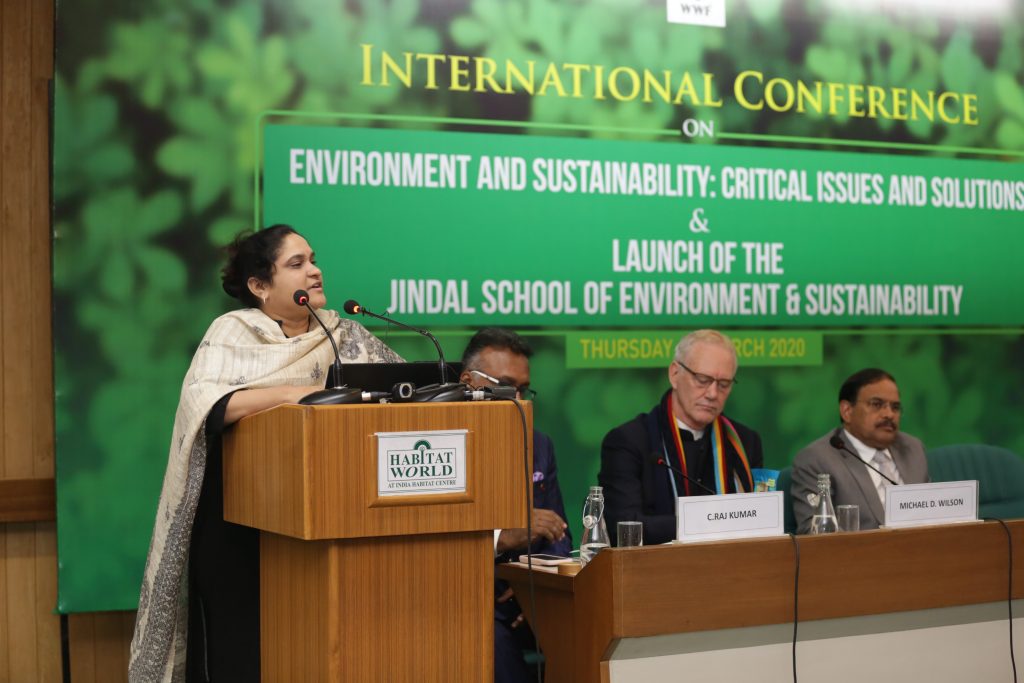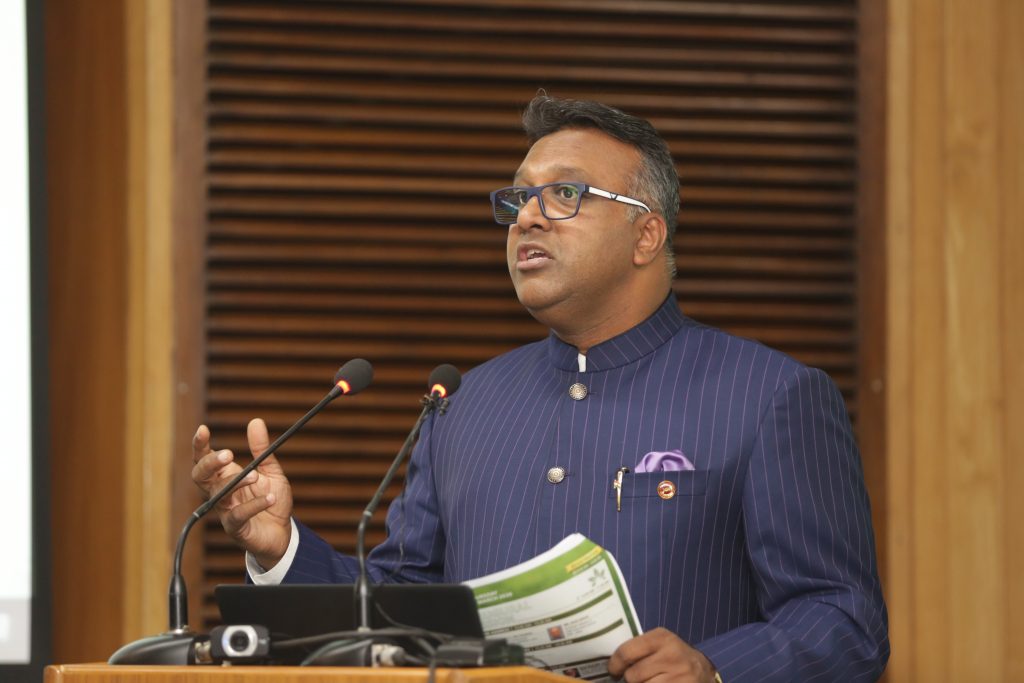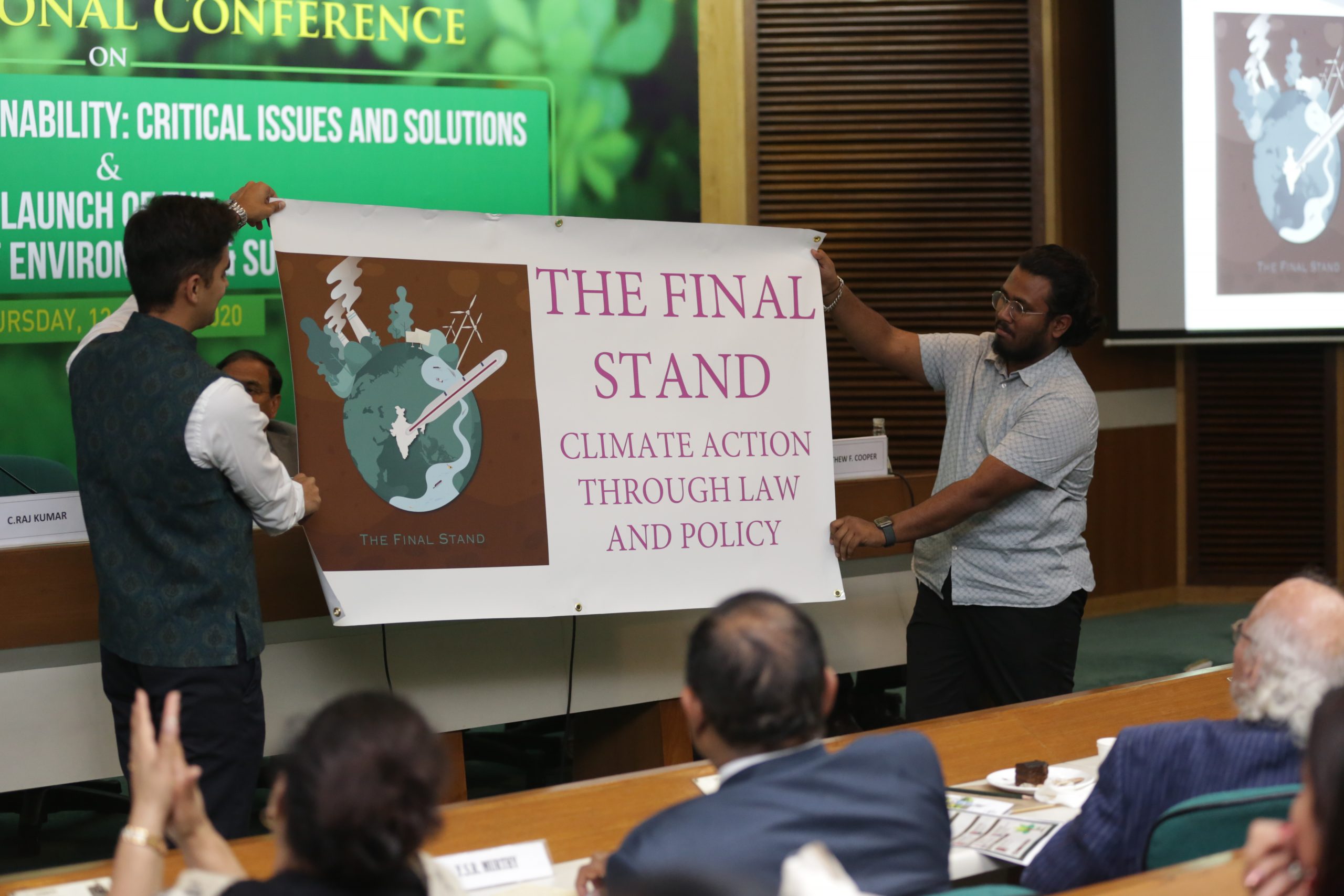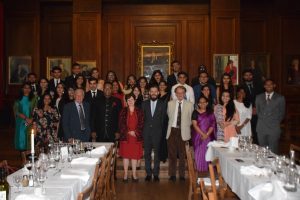On the outskirts of Shimla, Himachal Pradesh sits a famous temple dedicated to the ‘goddess of stars’, Tara Devi. It is surrounded by a dense forest. Adjoining the Tara Devi Temple and the forest is a vast private land, which was equally lush with Oak, Deodar and other native trees. In November 2014, the private property was sold to a builder, who saw a golden ‘opportunity’ to construct a hotel. As many as 477 trees that were perhaps over a 100 years old were wiped out immediately, and illegally.
But as the stars would have it, The National Green Tribunal—a statutory body established in 2010 to handle and expedite cases relating to the environment—soon caught air of the matter. Justice Swatanter Kumar, then chairperson of the NGT, was swift to take action. The agreement was cancelled, hefty fine imposed, and the Forest Department directed to plan reforestation of the area. In a strong move, the NGT also barred any future construction on the property. It is now reserved solely for afforestation. The order also demanded the offenders to plant 4770 trees—10 times the number felled.
Justice Kumar recounted the Tara Devi case at the International Conference on ‘Environment and Sustainability: Critical Issues and Solutions’ held at India Habitat Centre on 12th March, 2020. The conference, which coincided with the foundation of Jindal School of Environment & Sustainability (JSES), was jointly organised by O.P. Jindal Global University (JGU) and World Wide Fund for Nature (WWF). A series of discussions ensued that were focussed not only on the challenges of the environment, but how to create effective solutions through law, policy, regulation, conservation, green building, science and technology, among other means. In the audience were students from JGU, Ambedkar University, Delhi University and other higher education institutions.
At a time when even global leaders are denying the realities of climate change, the story of justice in the small Himalayan hilltop is a silver lining. Yes, in ways big or small, some groups are acting for the environment.
Yet at the end of the day, it is simply not enough. The future of the planet and its people is undoubtedly at stake.There is no need to look at the stats and figures. Even if you do, the many environmental reports indicate, for the most past, major failings. The ambitious Paris Agreement of 2015, which set out to hold rising temperatures “well below” 2 degrees, is going to miss the mark.
It is clear as day—though ironically, clear days are numbered—that climate change is real. In spite of the relentless retelling of climate change effects and the pressing need for change—change is coming slowly, and unfortunately in many cases, if at all.
A lot more needs to be done. The many bigwigs present at the conference—a multidisciplinary panel of lawyers, judges, ministers, civil servants, policy makers, environmentalists, economists and academicians—urged the youth, governments, and communities, to come together, step up, and rally for the environment. Leaders in their domains, the speakers illustrated examples of both failings of governments and societies to curb climate change, and also small victories and prudent steps towards a better future.
Two sides of the environment problem
On the one hand, we need to deal with the circumstances humanity has already created for the environment. This means developing and effectively implementing laws and policies to protect and restore the environment, shift to green practices, achieve environmental sustainability in economy, development and infrastructure.
On the other, we need to deal with humanity’s continuing exploitation of the planet. This calls for something more. Take the Amazon rainforest, for instance. Environmentalists are worried about deforestation happening at a colossal scale. Scientists say that climate change already set in motion along with further fires and deforestation could cause the planet’s biggest rainforest to dry up. If the ‘lungs of the planet’ cease to be, we are heading towards a climate catastrophe.
This brings us to a pertinent question.

Is humanity missing a culture of care?
Dr. Tatjana Kochetkova, Assistant Professor, Jindal Global Law School, in an illuminating lecture at the conference, asks—what are the roots of the environmental crisis?
Historically, there was a time when human civilisation was only a small part of the biosphere—‘like an embryo in a mother’s womb’, describes Dr. Kochetkova. Now humanity has grown up. It has grown in size and in power. It has come into conflict with the biosphere, its ‘mother’.
Could this be seen as a crisis of consciousness? A crisis of culture? “Ultimately, it can be described as an existential crisis—a crisis of meaning. Over-consumption of the biosphere’s resources is a symptom of spiritual emptiness. I think philosophy and spirituality are primary in finding and designing solutions because what we need is a transformation towards an ecocentric culture and values and finding deeper meaning of life,” argues Dr. Kochetkova.
Addressing the environmental crisis with law and policy is important. But is it enough? We need a re-evaluation of our values and deeper cultural transformation. We need to rethink the foundations of our civilisation. A case study of Japan, as one of the greenest countries in the world, was brought forth to showcase how its transformation could be an inspiration for other countries. Japan, half a century ago, was very polluted. Yet Japanese citizens were driven by ecocentric values and the very ‘aesthetic Japanese culture in which beauty has priority’ as Dr. Kochetkova puts it. So it managed to clean up and develop the economy in a green way without sacrificing its growth. The Japanese people turned greening their country into an economically viable activity. This raises another critical issue—of ‘economy vs. ecology’.
Bridging the gap between development and ecology
There’s no argument that development is necessary. Going forward, developmental needs will only increase. India, as a developing nation, has seen a huge growth in linear infrastructure. Anywhere you go, roads are being laid down. India is also a large mammal country, noted Dr. Dipankar Ghose, Director, Species and Landscapes Programme, WWF India, at the second session of the conference on ‘Developing Sustainable & Resilient Infrastructure’. Large mammals represent India’s rich biodiversity. They need connected landscapes to thrive. But unfortunately, “Every day, you open newspapers to find mortality of at least one animal and one human on roads,” says Dr. Ghose.
If you look at the road map of the country, you’ll find an intricate web cutting across green areas. Unless the development of roads brings in sensitivity to wildlife, India’s biodiversity is at greater threat. The Ministry of Road Transport and Highways has laid out guidelines to avoid protected areas, but it’s easier said than done.
Dr. Ghose recalled the construction of the NH54E in Assam, which passed through a major elephant reserve. As a workaround, a plan was formulated to construct an ‘underpass’ for the elephants. The suggestion seemed almost comical. Nonetheless, the elephants were subsequently ‘trained’ to take the underpass. The plan’s success was a big question. As it were, the entire operation quite literally ‘bridged’ the gap between development and environment, captured in surveillance camera footage that showed elephants and even other animals coming through the underpass!
This shows that development does not have to be against nature. It is not the norm, but these are the stories that inspire. In the Tara Devi case too, the builder could have constructed small cottages in the clearings between trees without touching the green cover. Perhaps it would have gone on to become an environmentally sustainable and lucrative venture. Economy and ecology can go hand-in-hand. It offers some solace and a whole lot of motivation to know that some people are doing their part. It’s time all of us stepped up and joined in.

A need for collective involvement and responsibility
“We’ve lost community involvement, individual involvement,” says Dr. Bibek Debroy, leading Indian economist and Chairman, Economic Advisory Council to the Prime Minister, Government of India, in his lecture as Chief Guest at the launch of JSES. “There’s no way the government alone can solve a problem,” he adds. While some individuals and societies have stood up to address environmental issues, the larger populations perhaps remain largely desensitised. “There’s an assumption that protecting the environment is the government’s job,” believes Dr. Debroy. He may be right.
If not the government, then does the onus rest upon the judiciary? Indeed, there are bodies like NGT, and there are people like M.C. Mehta, widely admired as the lawyer who single-handedly won innumerable cases for the environment. Mr. Mehta delivered a keynote address at the event. “The judiciary can work to protect the environment, but it cannot do everything. It is the role of people. As citizens of this world, we must take whatever steps we can to protect the world. What history are we thinking of writing for the future? You have to create a breed of young people who work on these issues,” he appeals.
We need to halt, reverse and restore nature—put nature back on the path of recovery. All things considered, there is a strong need to create a new framework, where all nations pledge to protect nature. We need to raise commitments of governments, bring in non-state actors, increase the level of ambition and targets, and set clear, measurable targets. To make this possible, to stand a winning chance, we need to challenge ourselves as a global community.
How can young people rise to the challenge?
Whether you want to become a lawyer, activist, economist, civil servant, researcher, analyst, policy maker or business person, getting the right kind of education is the key. Or even if you don’t know just yet how you can contribute, but your gut tells you that you need to do something to save the planet—you need to come forward. You need a conducive environment to discover your interests, aptitude, strengths and your passions. You can find it through the necessary exposure and guidance at top global universities like JGU. Education is the future of any nation. Education is the future of the world. It is through education, that you can receive the knowledge, skills, experiences, and most importantly, guidance, to pave your way forward.

Launching Jindal School of Environment & Sustainability
The conference culminated with the official announcement of JGU’s new school—Jindal School of Environment and Sustainability (JSES). Prof. (Dr.) C. Raj Kumar, Vice Chancellor, JGU, in his address at the launch said that though the university’s eight other schools have many linkages to issues of the environment, there was a need to create a focussed, full-fledged school to study the environment in a multidisciplinary way.
The newly launched school, and its first programme, B.A. (Hons.) Environmental & Sustainability Studies, which will be offered in 2020, presents students with a rare opportunity. Students will learn to draw connections between the environment and society, to consider environmental problems from a global perspective and take local approaches to solving them. Experiential learning through student-led projects will put theory into practice. Understanding that the world is truly entwined in more ways than one, students will learn to look at economic, cultural and political factors behind environment and sustainability issues.
It is a course with the kind of academic rigour and exposure befitting the peers of young Greta Thunberg—the 17-year-old environmental activist who has caught the world’s attention by demanding global action towards reducing climate change effects. It is for those young high school students who want to stand up and make a difference in the world they live in, because it is sorely needed.



